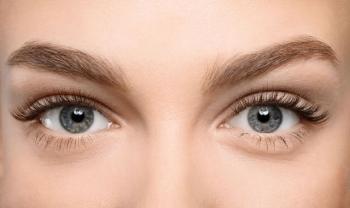
You can have a rejuvenated, more youthful, calm and healthy facial expression with a brow lift surgery. Your surgeon will decide which technique is suitable for you after the consultation: surgical or nonsurgical. Eyebrows can affect the way you look. Ageing typically causes the brows to move down and eyelids to sag due to movements around the forehead area. The lower position of the eyebrows and frown lines can make you look angry and tired. Thus, the low position of eyebrows is a common aesthetic issue among middle-aged people. A brow lift can be done together with forehead and eyelid surgery as these areas of the facial ageing figure at the same time.
What is a non-surgical brow lift?
Thanks to ever-developing technology in medicine, brow lift operations can now be made in a very short time without any scars or sensation loss. Non-surgical brow lift known as thread lift can eliminate the possible risks and complications of surgical operations. The procedure involves lifting different parts of the face using specialised thread without surgical incisions. It could be done together with Botox, spider web, and Ultherapy treatments to achieve the most efficient results.
Advantages of non-surgical brow lifts
· No risk of scarring
· No medical dressing or bandage
· You can go back to your daily activities immediately after the procedure
· It takes around 15 to 20 minutes
· No loss of sensation or numbness
· Fine lines will disappear
· Skin will rejuvenate and look fresh
· Eyebrows won't lower in time
What is forehead and brow lift?
A forehead and brow lift is a cosmetic procedure to correct sagging eyebrows, revitalise the entire forehead and raise and tighten loose skin around the eyes. With brow lift the natural process of facial ageing can be reversed and a more youthful appearance can be achieved.
What are the benefits of forehead and brow lift?
· A younger-looking face: the wrinkles on the forehead and between the eyebrows can make people look older than their age. With brow lift these signs can be removed to have a younger look.
· Younger and smoother look: a brow lift can highlight your eyes, which will make your face look smoother.
· It will boost the patient's self-confidence.
Brow lift procedure
This procedure involves making incisions on the hairline, behind the hairline, and above the eyebrows or middle forehead. An endoscopic brow lift is one of the techniques to perform a brow lift. After such surgeries, there won't be visible scars. The marks and scars will usually be hidden within the hairline. People aged between 40 to 65 usually undergo such surgeries, but in some cases, younger people also opt for a brow lift.
There are two types of forehead-brow lift surgeries.
· Classic forehead lift (an open brow lift)
· Endoscopic forehead lift
The classic or the open brow lift involves one continuous incision, starting at the level of your ears and going up around the hairline. Depending on the position of the hairline, the surgeon will move the incision line to avoid a visible scar.
In an endoscopic brow lift the surgeon makes small incisions on the scalp through a tiny camera, which is inserted into a thin plastic tube. The surgeon uses special small screws to anchor the underlying tissues.
These incisions are smaller than the classic brow lift surgery which leads to a speedy recovery. The main difference between the two types of surgery is the position of the incisions.
The surgeon will decide which type of surgery is suitable for the patient after the consultation. Both surgeries deliver a balanced freshness around the forehead, eyebrows, and eyelid area. The surgery is normally performed under general anaesthesia and takes between one to two hours. Brow lift can be combined with blepharoplasty, which is a type of surgery to remove excess skin or fat from the eyelids to form the muscles.
Recovery after forehead brow lift
Swelling and bruising are expected. These symptoms will resolve gradually in about 10 days.
The Head needs to be elevated for at least a week or two to avoid swelling. It is normal to feel temporary numbness and itchiness around the incision areas.